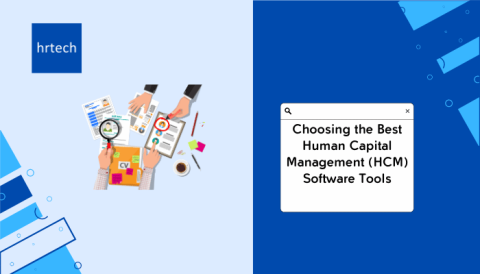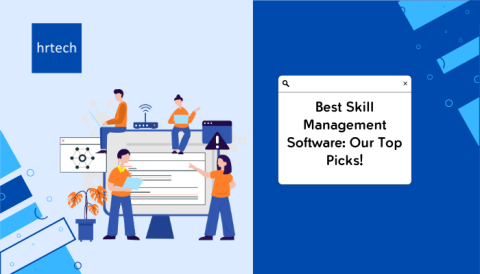When you’ve a diverse team, you bring together different perspectives, skills, and experience. And that leads to better problem-solving, increased innovation, and higher employee engagement. In fact, companies with a diverse workforce often outperform those without.
A diverse workforce can also improve customer service, company reputation, and more.
Let’s take a closer look at the 17 key benefits of having a diverse workforce, along with top challenges of managing a diverse workforce and the best practices for implementing a diversity program.
What Is A Diverse Workforce?
A diverse workforce is a group of employees with a wide range of characteristics, backgrounds, and experiences. It includes people of different ages, genders, races, ethnicities, abilities, and more.
Workforce diversity goes beyond just hiring people who look different. It’s about creating an inclusive environment where everyone feels valued and respected for who they are.
A truly diverse workforce includes a mix of all these characteristics and more. It’s about creating a workplace that reflects the diversity of the world.
Why Is A Diverse Workforce Important?
A diverse workforce is important for many reasons. First and foremost, it’s the right thing to do. Everyone deserves equal opportunities and respect, regardless of their background or identity. But diversity isn’t just important for its moral aspect, it’s also good for business.
Diverse companies are more innovative, more profitable, and better at decision-making than homogeneous ones. Diversity also helps companies better understand and serve their customers.
In today’s global economy, businesses need to be able to connect with people from all walks of life. A diverse workforce can provide valuable insights into different markets and help companies build stronger relationships with their customers. Finally, a diverse workforce is also important for attracting and retaining top talent.
According to Pew Research Center, 56% of employees consider diversity, equity, and inclusion in the workplace as a good move.
Now, let’s explore all the essential benefits of having a diverse workforce.
17 Key Advantages And Benefits Of Having A Diverse Workforce
1. Faster Problem Solving
When a company has employees from different backgrounds, they bring unique perspectives to the table. This diversity of thought allows for quicker problem-solving. Each employee can offer their own insights based on their experiences, leading to a broader range of potential solutions.
Having a diverse team means that problems can be approached from multiple angles. This increases the likelihood of finding the best solution in a shorter amount of time.
For example, if a company is facing a challenge with a new product launch, a diverse team can provide various viewpoints on how to tackle the issue.
One employee may have experience in a similar situation, while another may have a completely different approach that hasn’t been considered before. Faster problem-solving ultimately leads to increased efficiency and productivity within the company.
2. More Creativity
Creativity develops in diverse environments. When employees come from different backgrounds, they bring unique ideas and perspectives to the creative process. This leads to more innovative solutions and out-of-the-box thinking. A diverse workforce can help break down the barriers of groupthink, where everyone has similar ideas and opinions. With a variety of perspectives, new and innovative ideas can emerge.
For instance, if a company is brainstorming ideas for a new marketing campaign, a diverse team can provide a wide range of concepts. An employee from a different cultural background may have a unique insight into how to appeal to a specific audience.
More creativity leads to a competitive edge in the market and the ability to better serve a diverse customer base.
3. Better Employee Retention
When employees feel valued and included, they are more likely to stay with a company long-term. A diverse workforce helps create a sense of belonging and acceptance among employees. Inclusive workplaces help build a positive company culture where employees feel comfortable being themselves. This leads to higher job satisfaction and lower turnover rates.
For example, if a company has a diverse leadership team, it sends a message to employees that there are opportunities for advancement regardless of background. This can inspire employees to work harder and stay with the company longer.
Better employee retention saves companies time and money on recruiting and training new hires. It also leads to a more knowledgeable workforce.
4. Improved Customer Service
A diverse workforce can better understand and serve a diverse customer base. When employees come from different backgrounds, they can relate to and communicate with customers from similar backgrounds.
This leads to improved customer service and higher customer satisfaction rates. Customers feel more understood and valued when they can connect with employees who share similar experiences. Improved customer service ultimately leads to increased sales and revenue for the company.
5. Higher Innovation
Innovation is the key to staying ahead in the current competitive business world. A diverse workforce brings a wide range of experiences, skills, and perspectives together, which can lead to higher levels of innovation.
When employees from different backgrounds work together, they can challenge each other’s assumptions and come up with new and creative ideas. This can lead to breakthroughs in products, services, and processes.
Study shows that companies with diverse teams are almost 2 out of 10 times more likely to generate profits from innovation than the companies with less diversity in their teams. As companies have more diversity in the workplace, they can develop a culture of innovation that leads to long-term success.
6. Higher Employee Engagement
Employee engagement is crucial for any organization’s success. When employees are engaged, they are more productive, motivated, and committed to their work. A diverse workforce can lead to higher levels of employee engagement by creating a more inclusive and welcoming work environment.
When employees feel valued and respected for who they are, they are more likely to be engaged in their work.
7. Better Company Reputation
When applying for a job, data shows that more than 6 in 10 applicants would consider workforce diversity as a key factor in their decision making process.
Consumers and job seekers are increasingly looking for companies that value diversity and inclusion. A diverse workforce can help a company build a better reputation and attract top talent.
Companies that are known for their commitment to diversity and inclusion are more likely to be seen as socially responsible and attractive to work for.
8. Reduced Bias In The Workplace
According to a survey from Deloitte, in which over 3000 employees were surveyed, about 60% of them highlighted the presence of biases in their workplace.
Bias, whether conscious or unconscious, can have a negative impact on a company’s culture and decision-making processes. A diverse workforce can help reduce bias by bringing different perspectives and experiences together.
When employees from different backgrounds work together, they can challenge each other’s assumptions and biases. This can lead to better decision-making and a more inclusive work environment.
9. Better Talent Acquisition
A diverse workforce can help companies attract top talent from a wider pool of candidates. When job seekers see that a company values diversity and inclusion, they are more likely to apply and accept job offers.
Companies that prioritize diversity can explore new talent pools and find qualified candidates who may have been overlooked otherwise. This can lead to a more skilled and experienced workforce.
10. Greater Market Understanding
A diverse workforce can help companies better understand and serve their diverse customer base. When employees come from different backgrounds and experiences, they can provide valuable insights into the needs and preferences of different market segments.
This can help companies customize their products, services, and marketing strategies to better meet the needs of their customers.
11. Stronger Financial Performance
Studies have consistently shown that companies with diverse workforces tend to have stronger financial performance.
In fact, companies with diverse teams are 4 out of 10 times more likely to get better financial returns.
Diverse companies are better able to innovate, attract top talent, and understand their customers, all of which can lead to increased revenue and profitability. Furthermore, diverse companies are better positioned to handle economic downturns and adapt to changing market conditions.
12. Increased Adaptability
With the rapidly changing business world and increasing competition day-by-day, companies need to be able to adapt quickly to changing circumstances. A diverse workforce can help companies be more adaptable and future-proof in the face of change.
When employees come from different backgrounds and experiences, they bring a wider range of skills, knowledge, and perspectives which helps companies be more creative and innovative in solving problems and capturing new opportunities.
13. Multiple Perspectives
A diverse workforce brings multiple perspectives to the table. Employees from different backgrounds, cultures, and experiences offer unique viewpoints and ideas. These diverse perspectives can help companies approach problems and challenges from different angles. This leads to more creative and effective solutions.
For example, a team with members from different age groups may have different insights into how to market a product to different generations. Multiple perspectives can also help companies avoid blind spots and make more informed decisions.
Diverse perspectives are a valuable asset for any company looking to innovate and stay ahead of the competition.
14. Better Employee Relations
A diverse workforce can lead to better employee relations. When employees feel valued and included, they are more likely to have positive relationships with their colleagues. Inclusive workplaces foster a sense of belonging and respect among employees. This can lead to better communication, collaboration, and teamwork.
For example, a company that celebrates different cultural holidays can help employees feel more connected to their colleagues and the organization as a whole.
Better employee relations can also lead to reduced conflict and turnover. When employees feel supported and respected, they are more likely to stay with the company long-term.
15. Improved Decision Making
Diverse teams can also make better decisions. In fact, studies show that they are 8 out of 10 times more likely to make better decisions than companies with less diverse teams. When people from different backgrounds come together, they bring different perspectives and ways of thinking—all at one place.
This diversity of thought can help teams make more informed and objective decisions. Diverse teams are more likely to consider multiple viewpoints and challenge each other’s assumptions. And improved decision making ultimately leads to better business outcomes.
16. Broader Skill Set
A diverse workforce brings a broader range of skills and experiences to the table. Employees from different backgrounds and industries can offer unique skill sets that complement each other. For example, a team with members from both technical and creative backgrounds can bring a more well-rounded approach to problem-solving.
A broader skill set can also help companies be more adaptable. When faced with new challenges or market changes, a diverse team is more likely to have the skills and knowledge needed to analyze the situation and respond effectively.
Investing in a diverse workforce can help companies build a more skilled and adaptable team that is better capable in handling whatever challenges come their way.
17. Enhanced Global Reach
A diverse workforce can also help companies expand their global reach and better serve international markets. Employees from different countries and cultures can provide valuable insights into local market conditions, consumer preferences, and business practices. They can also help companies understand cultural differences and build relationships with international partners and customers.
For example, a company with employees who speak multiple languages can better communicate with customers and partners in different parts of the world.
Overall, diversity can be a key competitive advantage for companies looking to expand their global presence and get into new markets.
However, managing a diverse workforce also has its own unique set of challenges.
Challenges Of Managing A Diverse Workforce
Communication Barriers:
When employees come from different backgrounds and speak different languages, communication can be a challenge. Misunderstandings and miscommunications can lead to confusion and conflict.
Cultural Differences:
Different cultures have different values, norms, and expectations. What may be considered appropriate behavior in one culture may be offensive in another. Managers need to be aware of these differences and navigate them carefully.
Resistance To Change:
Some employees may resist diversity efforts, seeing them as unnecessary or even threatening. They may fear losing their priviledge or status in the workplace.
Unconscious Bias:
Even the most well-intentioned managers can have unconscious biases that affect their decision-making. These biases can lead to unfair treatment and discrimination if left unchecked.
Lack Of Representation:
While a company may have a diverse workforce overall, certain groups may still be underrepresented in leadership roles or certain departments. This can lead to feelings of exclusion and limit opportunities for advancement.
Interpersonal Conflicts:
Diversity can sometimes lead to interpersonal conflicts among employees. These conflicts may arise from differences in communication styles, work habits, or personal values.
Legal Compliance:
Companies must comply with various laws and regulations related to diversity and equal opportunity. Failure to do so can result in legal action and damage to the company’s reputation.
Now, let’s dive into some of the best practices and tips to effectively implement a diversity program.
Best Practices For Implementing A Diversity Program
Get Leadership Support:
Diversity initiatives are more likely to succeed when they have the support of top leadership. Make sure senior executives are on board and actively involved in the program.
Conduct A Diversity Audit:
Before launching a diversity program, assess the current state of diversity in your organization. Look at metrics like representation, hiring practices, and employee satisfaction to identify areas for improvement.
Set Clear Goals And Metrics:
Establish specific, measurable goals for your diversity program. These might include increasing representation of underrepresented groups, improving retention rates, or reducing the gender pay gap.
Provide Diversity Training:
Offer training to help employees understand and appreciate diversity. Cover topics like unconscious bias, cultural competence, and inclusive communication.
Update Hiring Methods:
Review your hiring practices to ensure they are fair and inclusive. Use diverse interview panels, remove biased language from job descriptions, and consider blind resume screening.
Create Employee Resource Groups:
Encourage employees to form resource groups based on shared identities or experiences. These groups can provide support, networking opportunities, and a voice in company decision-making.
Hold Leaders Accountable:
Make diversity and inclusion a part of leadership performance evaluations. Hold leaders accountable for meeting diversity goals and creating an inclusive work environment.
Communicate Regularly:
Keep employees informed about the progress of your diversity program. Share metrics, success stories, and areas for improvement. Encourage open dialogue and feedback.
Continuously Improve:
A diversity program is not a one-time initiative. Continuously assess and improve your efforts based on employee feedback and changing demographics. Stay up-to-date on best practices and emerging trends in diversity and inclusion.
Final Thoughts
There are several benefits of having a diverse workforce. From more creativity and innovation to better problem solving and global reach, diversity programs can be beneficial for a company in many different ways.
Building a diverse workforce is an ongoing process and does take time, effort, and commitment.
But, by creating a more welcoming and diverse company culture, it becomes easier to attract top talent, retain valuable employees in the company.
Want to explore more training material, resources, and certification programs related to HR? Visit hrtech to learn more now!





